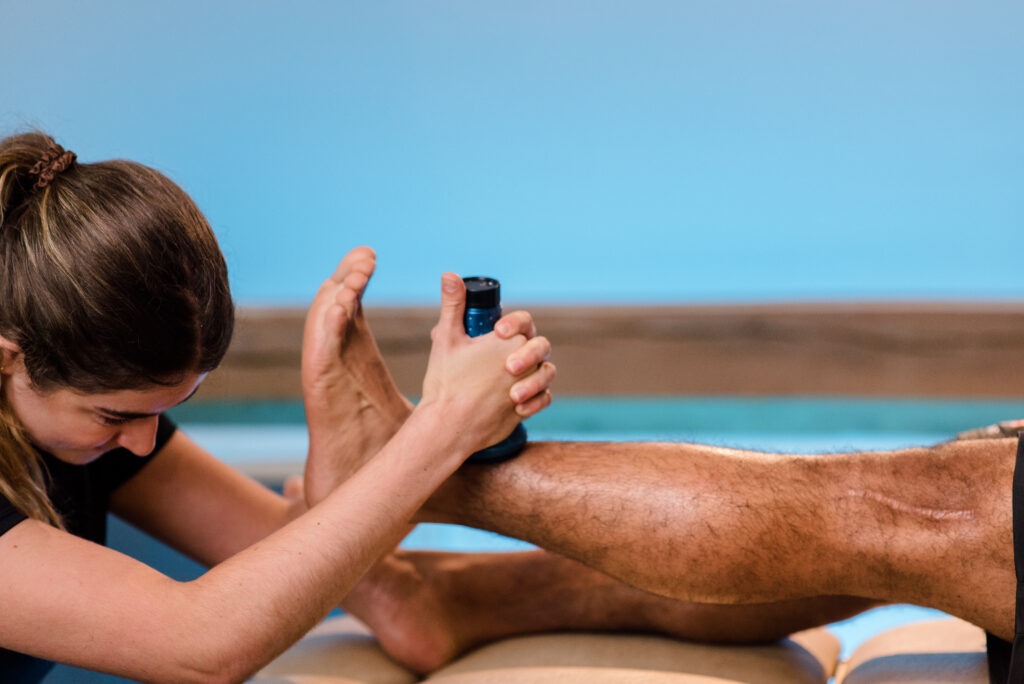
March 18, 2025
The Importance of Strength Testing in Foot and Ankle Rehabilitation
Strength testing plays a crucial role in foot and ankle rehabilitation, helping clinicians assess muscle function, track recovery progress, and guide treatment plans. By using objective measures such as dynamometers and force plates, healthcare professionals can ensure a patient’s return to full function while minimising the risk of re-injury.
Why Is Strength Testing Important?
- Identifies Muscle Weakness and Imbalances
- After an injury or surgery, certain muscles may become weaker, leading to compensatory movement patterns.
- Testing helps pinpoint which muscles need targeted strengthening.
- Monitors Recovery Progress
- Regular strength assessments provide quantifiable data on improvements over time.
- Helps adjust rehabilitation protocols based on patient progress.
- Prevents Re-Injury
- Weak foot and ankle muscles increase the risk of instability and future injuries.
- Strength testing ensures adequate recovery before returning to sports or daily activities.
Optimises Treatment Plans
- Enables individualised rehabilitation programmes based on objective data.
- Helps determine when a patient is ready to progress to weight-bearing exercises, balance training, or sport-specific drills.
- Enhances Performance in Athletes
- Strength testing ensures proper muscle activation and force production.
- Crucial for runners, dancers, and athletes who rely on foot and ankle stability.
Example Foot Exercises
1️. Big Toe Flexion (Strengthens intrinsic foot muscles)
How to do it:
Place your foot over the edge of a step.
Place a TheraBand under your toe and curl your toes to pull the band.
3 sets of 10 reps per foot – make it more challenging as you become familiar with the exercise.
Why? Enhances toe grip strength and arch stability, reducing foot fatigue.
2️. Resistance Band Ankle Strengthening (Targets dorsiflexion, plantarflexion, inversion, and eversion)
How to do it:
Loop a resistance band around your foot and pull in different directions to work each movement.
3 sets of 15 reps per movement
Why? Strengthens ankle stabilisers, reducing the risk of sprains and strains.
3️. Calf Raises (Double & Single Leg) (Builds calf and Achilles tendon strength)
How to do it:
Stand on the edge of a step and rise onto your toes, then lower slowly.
Progress to single-leg raises for added challenge. Bend your knee and hold bent to add to the challenge.
3 sets of 15 reps
Why? Strengthens the gastrocnemius and soleus muscles, improving push-off power.
4️. Intrinsic Foot Exercise (Engages the intrinsic foot muscles for arch support)
How to do it:
While seated, contract the muscles of your arch without curling your toes.
Progress to standing position.
Hold for 5 seconds, relax, and repeat.
3 sets of 10 reps
Why? Essential for flat feet, plantar fasciitis, and improved foot control.
5️. Balance & Proprioception Drills (Improves ankle stability & prevents injuries)
Examples:
Single-leg balance (Eyes open/closed, on unstable surfaces)
Heel-to-toe walking (Strengthens foot coordination)
Bosu Ball or Foam Pad Balance (Advanced stability training)
3 sets of 30 seconds per exercise
Why? Enhances neuromuscular control, reducing fall risk and ankle instability.
6️. Skipping Rope or Plyometric Drills (For dynamic foot & ankle strength)
How to do it:
Start with two-foot jumps, progress to single-leg hops.
Perform for 30 seconds, rest, repeat 3 times.
Why? Boosts explosiveness and shock absorption, crucial for runners or return to any sport.
Final Tip: Progress Gradually!
Start with low resistance and slow movements, then increase speed and intensity as strength improves.